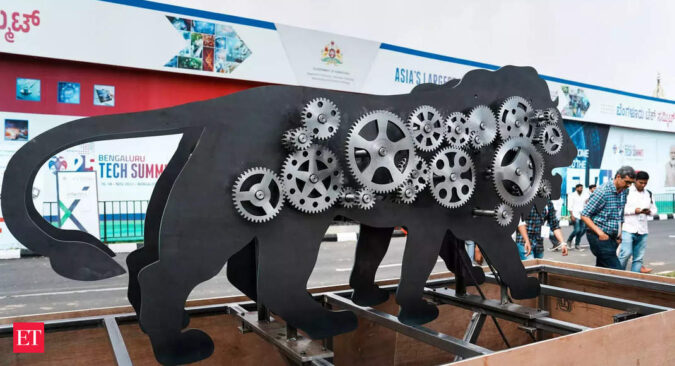Jaishankar was voicing the general sentiment that China’s cheap imports de-industrialise India, take away millions of jobs and keep it dependent on China, therefore India’s trade imbalance with China calls for more local manufacturing. India’s trade gap with China widened to $83.2 billion in the last fiscal as against $72.91 billion in 2021-22. Exports to China dipped by about 28 per cent to $15.32 billion in 2022-23, while imports rose by 4.16 per cent to $98.51 billion in the last fiscal.
The solar dilemma
India’s solar industry is an example of how India faces a complex challenge to fulfill its Make in India ambition. India might cut its import duties on solar panels to half, Reuters has reported recently. The renewable energy ministry has held talks with the finance ministry to approve its request to cut the import tax on solar panels from 40% to 20%,
India’s nascent solar modules industry, which has been growing in the shelter of high tariffs, dreads such a steep cut in import duties. The duty cut will deliver a blow to India’s ambition of quickly expanding local production.
But local plants can’t keep up with rising demand and India must import solar modules to fill the gap. India is aiming to install 280 gigawatts of solar generation by 2030, compared to about 64 gigawatts now, as it overhauls its coal-dominated power grid, according to news agency Blomberg. That would require the addition of 27 gigawatts of capacity every year for the rest of the decade — more than double the volume installed last year.
While its local industry can’t meet the rising demand, India must import more solar modules. But that imperils its nascent domestic industry which must grow to support the solar energy targets. “Such volatile changes in government policy show that businesses can’t be dependent on policy support,” Vinay Rustagi, MD at Bridge To India, a renewable energy consulting firm, told Bloomberg recently. “It’s a dampener for domestic manufacturing prospects.”The China conundrum
Even when India tries to become more self-reliant by increasing local manufacturing capacity, it still has to depend on China for critical intermediate inputs. Take the case of Apple’s iPhones made in India by Tata. Almost 90% components used for Apple phones by Tata are sourced from Mainland China, even as Apple looks to shift manufacturing to India, ET has reported recently. Items such as brackets, industrial glues, screws, mesh, pressure sensitive adhesives and metal parts are all shipped from China as per Apple’s instructions.Only Apple’s old-time vendors such as Foxconn, Pegatron and Wistron manufacture “end-to-end” phones in India. In FY23, India accounted for 5% of iPhone’s total global production and exported phones worth $5 billion, a near four-fold surge compared with a year ago.
Localisation of manufacturing, the domestic value addition, however, can’t happen before manufacturing achieves critical mass. Till then, India will have to depend on China for imports of intermediate goods. If you add to it the import of finished items where India cannot compromise growth, such as in the solar sector, it indicates a heavy reliance on China. It means India’s project to become self-reliant in manufacturing must depend on imports from China, at least initially.
Many electric two-wheeler companies cornering subsidies, aimed at promoting domestic manufacturing to meet the ambitious green mobility goals, from the government without fulfilling the localisation requirements is a case in point. Many parts are imported from China due to lack of sufficient local manufacturing .
What are the prospects?
Global supply chains are not easy to shift from countries where they got embedded in a vast local manufacturing ecosystem. The countries trying to do that must develop comparable ecosystems which can’t happen overnight. Meanwhile, they will have to depend on imports from China. Tariffs alone can’t help local industries.
But India’s concerted push for self-reliance in manufacturing, powered by hefty production-linked incentives, is not without results. India’s imports of electronic goods such as laptops, personal computers, integrated circuits and solar cells from China declined during 2022-23, according to a report by economic think tank Global Trade Research Initiative (GTRI). The fall in imports is notable in electronic items where the incentives scheme is operational. Import of medical equipment declined 13.6 per cent to $2.2 billion last fiscal year as compared to 2021-22. Similarly, import of solar cells, parts, diodes slumped 70.9 per cent to $1.9 billion in 2022-23.
However, import of lithium-ion batteries surged about 96 per cent to $2.2 billion last fiscal year. India’s green mobility goals will only increase these imports steeply. For India to keep its growth steady, meet its energy goals and expand its manufacturing base, the Make in India must be supported by Make in China.
